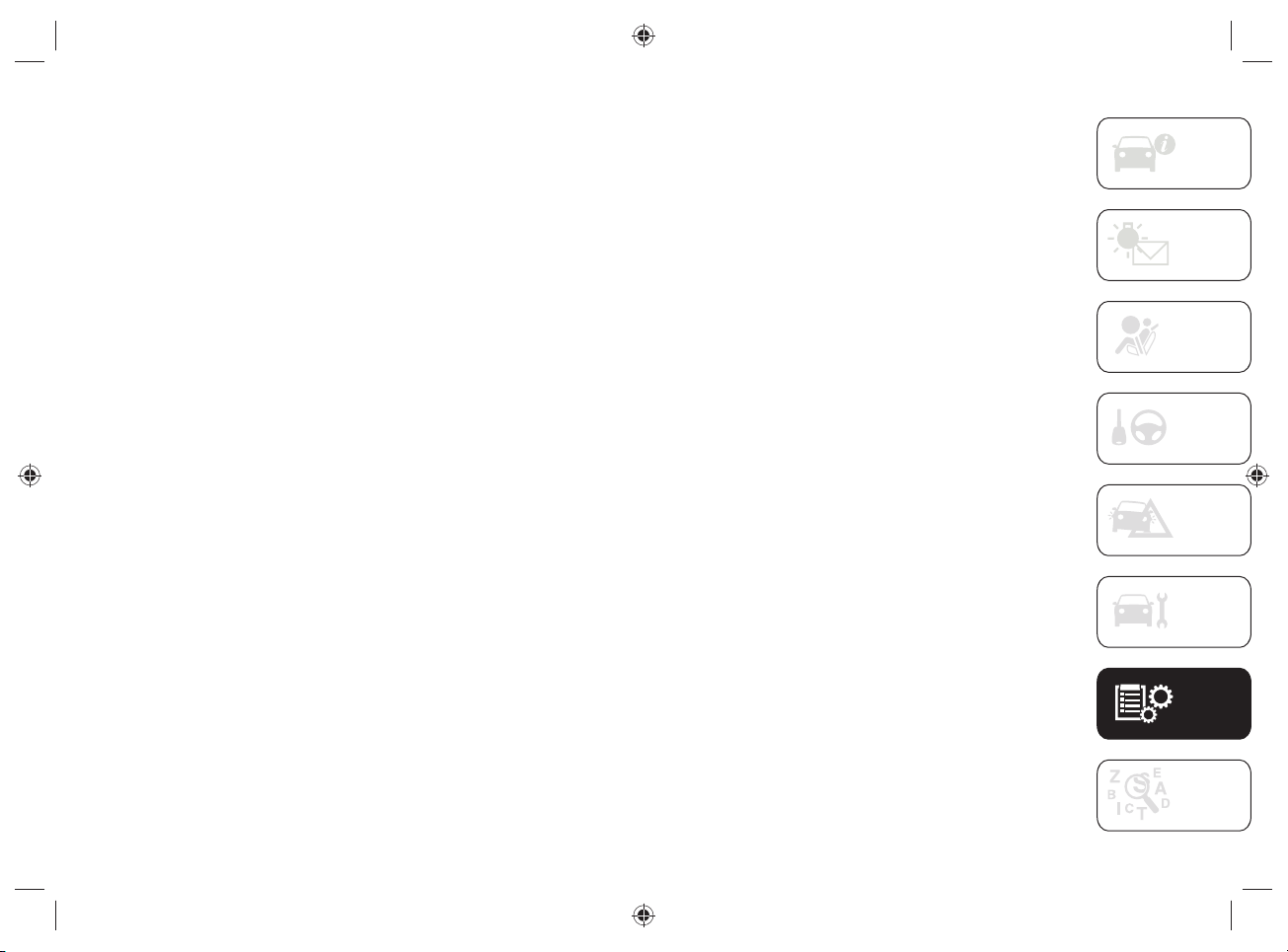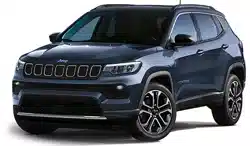Loading ...
Loading ...
Loading ...

137
"Approach angle" - reference B
The approach angle is determined by the horizontal line of the road surface and by the tangent line passing between the front wheel and
the most projecting low point of the car.
The wider the angle, the lower the chance to hit an obstacle with the body or chassis, climbing a steep slope or overcoming an obstacle.
Four-wheel drive (eAWD) versions: 16°
Trailhawk versions with four wheel drive (eAWD LOW): 30.4°
"Departure angle" - reference C
The departure angle is determined by the same lines of the "Approach angle", and refers to the rear part of the car.
Four-wheel drive (eAWD) versions: 32°
Trailhawk versions with four wheel drive (eAWD LOW): 33.3°
"Breakover angle" - reference D
The value of the "Breakover angle" is linked to the ground clearance of the car and indicates the attitude of the car to overcome a
wedge, more or less steep, preventing the car from resting on the ground with the body or chassis after touching the wedge with its
lowest and most projecting parts (usually the underbody), because this would highly reduce wheel grip.
The wheels, without a suitable grip to the ground, will not have suffi cient hold to move the vehicle, and will surge.
The higher the ground clearance, the wider the breakover angle. Always bear in mind that the higher the ground clearance, the lower
the stability, due to a higher center of gravity which reduces the side rollover angle.
Four-wheel drive (eAWD) versions: 18°
Trailhawk versions with four wheel drive (eAWD LOW): 20.9°
Loading ...
Loading ...
Loading ...
